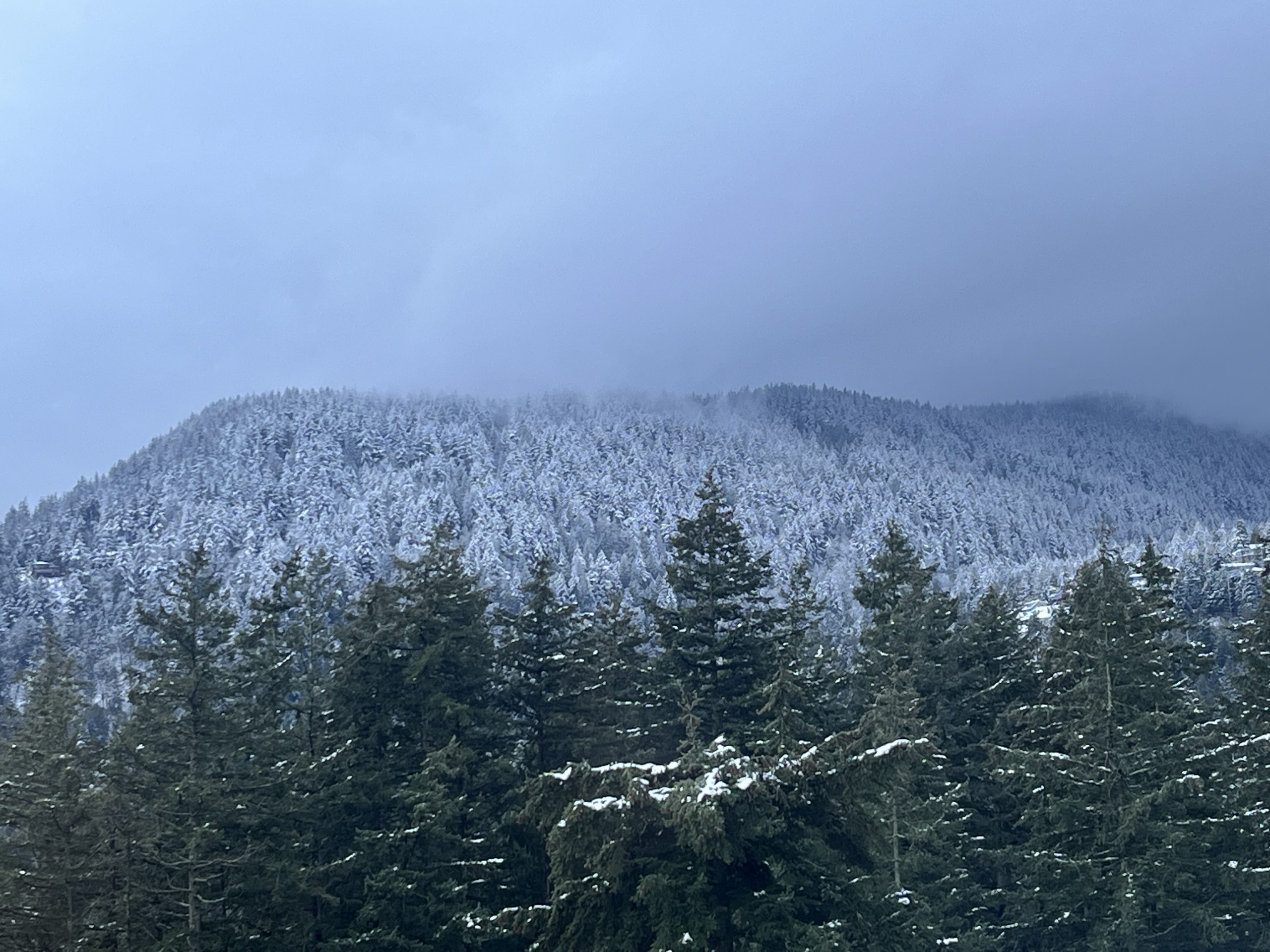New Squamish names on Bowen Island

It’s a snow day here on Nexwlelexwm/Bowen Island. After a couple of weeks of clear warms weather, winter seems to have finally gotten around to giving us a little blast of snow and cold. we’re looking at a week or so of colder than normal temperatures on the back of these squally snow events we’ve been having for the past twelve hours.
After shovelling and salting the driveway, wrapping my water pump in a blanket and checking the heat tape on the pipes, I settled in to watch soccer and catch up on local news. It’s been 24 hours of utter chaos at the continental level, so I turned to The Undercurrent, our local newspaper to see what’s happening.
I realize that had missed this story: “New names chosen for Bowen beaches“:
A pair of Bowen beaches will be receiving new names in the coming months.
The two destinations set to change names are Crayola Beach in the Bluewater neighbourhood and Pebble Beach at Cape Roger Curtis. They’ll be known as Xéla7an and Smí7mant Áyalhkw respectively going forward, drawing their new names from the Squamish language. The initiative is a result of a Bowen Island Parks Plan recommendation for collaboration with Squamish Nation, and a means to clear up some practical issues with the current names…
Aaron Williams, a language specialist with Squamish Nation, provided the guidance for the new names. Joined by his mother and cousin, the three came to Bowen last fall and met with manager of environment and parks planning Carla Skuce to explore the beaches in question.
This is fantastic. It follows on the heels of a ceremony held in 2020 to officially add “Nexwlelxwm” to the island’s welcome gateway, and I’m thrilled that Aaron and Vanessa came over to do this work. The two names came to Aaron and Vanessa on their visits to the beaches.
The first beach they visited is at Cape Roger Curtis and is known as “Pebble Beach” which confuses it with “Pebbly Beach” located on the opposite side of the island.
“One of the main things we noticed at this beach is that there were lots of little pebbles, it was like somebody went in there and dumped tons and tons of tiny little pebbles, and you could tell they were all rounded from the ocean… that was a very huge indicator for this name,” said Williams as he presented the new names to council last month.
“It was very striking to see that… this indicated this beach was very untouched and unscathed from development, which was very beautiful to see,” added Williams. As a result he felt Smí7mant Áyalhkw – translated to ‘place of pebbles’ – appropriately reflected the setting of the beach, a “reference to the wonderful state and condition that the beach is in.”
My best shot at providing a useful pronunciation of this name is “SMEH-munt EYE-alk.” In Squamish the “7” is a glottal stop and the “lh” sound is pronounced like the “tl” in the word “Atlanta” except a bit softer. The k in “Áyalhkw” is actually underlined, by that character doesn’t show up in my typeface. It’s sounded deep in the throat and the the w indicates that you make the sound with rounded lips. But “SMEH-munt EYE-alk” is a good starting point!
Further north on Bowen’s west side the group visited Crayola Beach, occasionally known as Bluewater Beach. Aaron’s mother Vanessa noticed red markings left by water tides on rock banks and bluffs. This brought forward memories of petroglyphs, a form of communication where messages are created through a technique of marking rocks.
“It was something that really stood out to her, and reminded her of our old way of educating the future through the petroglyphs,” explained Aaron. This led to the name Xéla7an, which means ‘marked/coloured on the cheek/side’.
That name – actually spelt with an underlined X – could be pronounced HEL-ah-un. The “HEL” should be pronounced with a guttural sound like you’re saying “Chutzpah” in Yiddish.
It’s amazing to have these two new names for features on our island. Great work and much appreciation to our Council, Carla, and to Aaron and Vanessa.


Thanks for sharing.